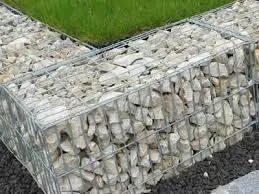-
 Phone:
Phone: -
 Email:
Email:

hexagonal wire mesh sizes
Understanding Hexagonal Wire Mesh Sizes An Overview
Hexagonal wire mesh, also commonly known as hex mesh, is a versatile material widely used across various industries due to its unique structural design and strength. Made by weaving wire into a hexagonal pattern, this type of mesh serves numerous applications, including fencing, animal enclosures, garden projects, and even in architectural and construction purposes. Understanding the sizes and specifications of hexagonal wire mesh is vital for selecting the right type for your project needs.
What is Hexagonal Wire Mesh?
Hexagonal wire mesh is produced from galvanized steel or stainless steel wire. The primary feature that sets it apart is its hexagonal openings, which provide a larger area of coverage while maintaining excellent structural integrity. The mesh's shape allows it to be more flexible and adaptable to different environments as compared to square or rectangular wire mesh.
Common Sizes of Hexagonal Wire Mesh
Hexagonal wire mesh comes in various sizes, which can be categorized based on the wire diameter, mesh opening size, and roll width
. These specifications are crucial as they determine the mesh's strength, durability, and application suitability.1. Wire Diameter The wire diameter typically ranges from 0.5 mm to 3.2 mm. Thicker wires offer increased strength and resistance to bending, making them suitable for heavy-duty applications such as animal fencing or support for concrete in construction.
2. Mesh Opening Size The opening size is critical depending on the intended use. Common opening sizes include 19 mm, 25 mm, and 50 mm. Smaller openings are generally used for applications requiring containment, such as poultry or rabbit enclosures, while larger openings may be preferred for landscaping purposes or garden fencing.
hexagonal wire mesh sizes

3. Roll Width Hexagonal wire mesh is available in standard roll widths ranging from 0.5 meters to 2 meters. The choice of roll width will depend on the area that needs to be covered and the ease of installation.
Factors to Consider When Choosing Hexagonal Wire Mesh
- Application Determine the primary use of the mesh. For instance, if you're building a chicken coop, you'll want smaller openings to prevent birds from escaping. Conversely, for a decorative garden fence, larger openings may be more suitable.
- Environmental Conditions Consider where the mesh will be installed. If subjected to harsh outdoor conditions, opting for galvanized or stainless steel wire can enhance longevity and resistance to rust and corrosion.
- Aesthetic Preference The appearance of the mesh may also play a role in your selection, especially for landscaping purposes. A well-finished hexagonal wire mesh can add an elegant touch to your garden while serving its functional purpose.
Conclusion
In summary, hexagonal wire mesh is an invaluable resource for a wide range of applications, thanks to its strength and flexibility. Understanding the sizes and specifications of hexagonal wire mesh helps in making informed decisions that meet your specific needs. Whether you require it for garden fencing, support structures, or animal enclosures, there is a variant of hexagonal wire mesh available to suit your project. Always ensure to assess your requirements and environmental conditions before making a selection. With the right choice, hexagonal wire mesh can provide both functionality and aesthetic appeal, making it a favored option in various construction and gardening projects.
-
Wire Mesh for Every Need: A Practical SolutionNewsJul.25,2025
-
Steel Fences: Durable, Secure, and Stylish OptionsNewsJul.25,2025
-
Roll Top Fencing: A Smart Solution for Safety and SecurityNewsJul.25,2025
-
Cattle Farm Fencing Solutions for Maximum SecurityNewsJul.25,2025
-
Affordable Iron Binding Wire SolutionsNewsJul.25,2025
-
Affordable Galvanized Wire SolutionsNewsJul.25,2025
-
Wire Hanger Recycling IdeasNewsJul.25,2025








